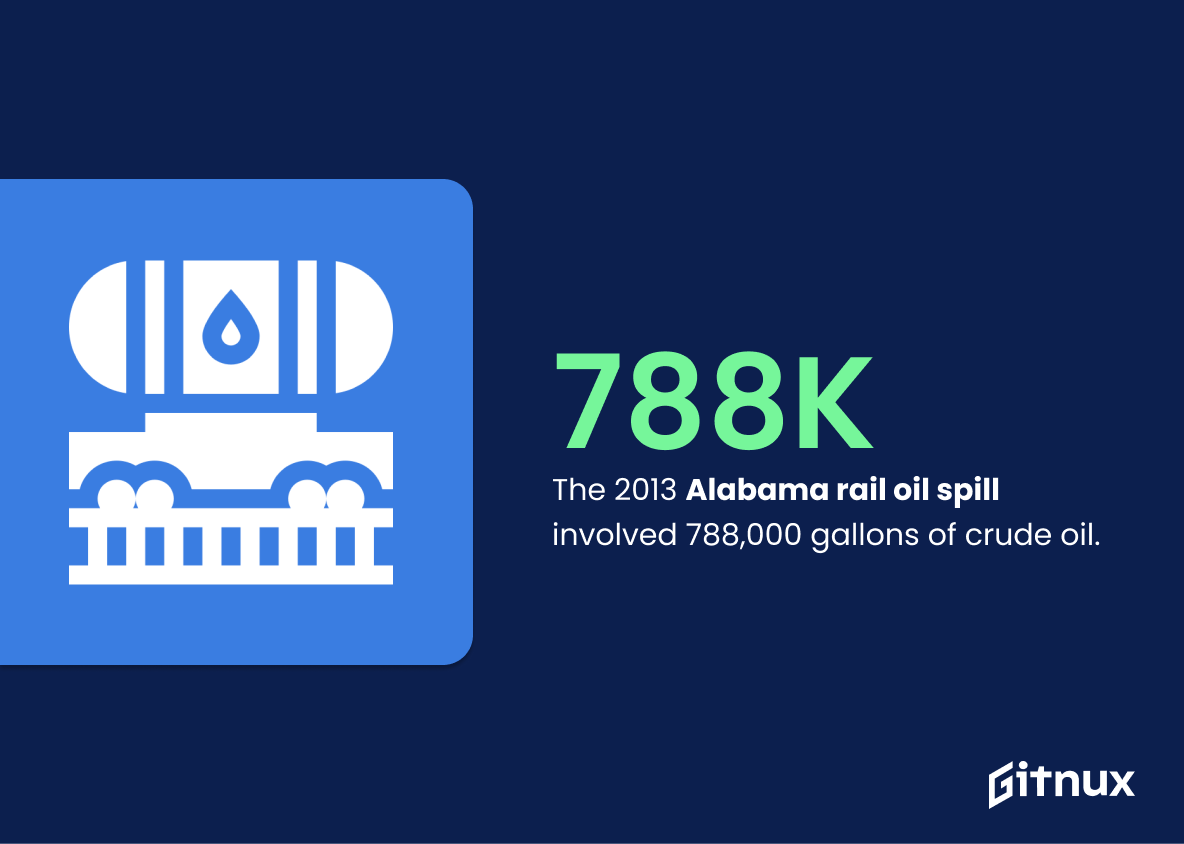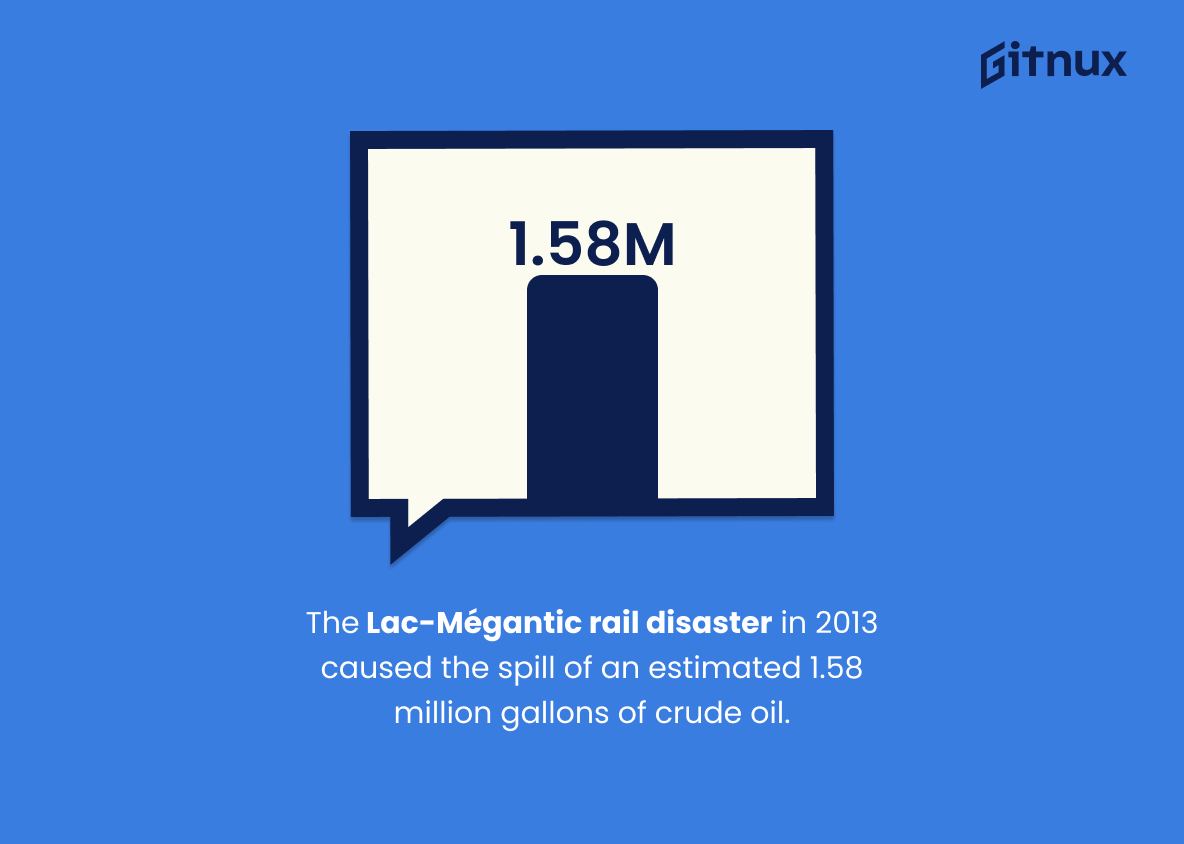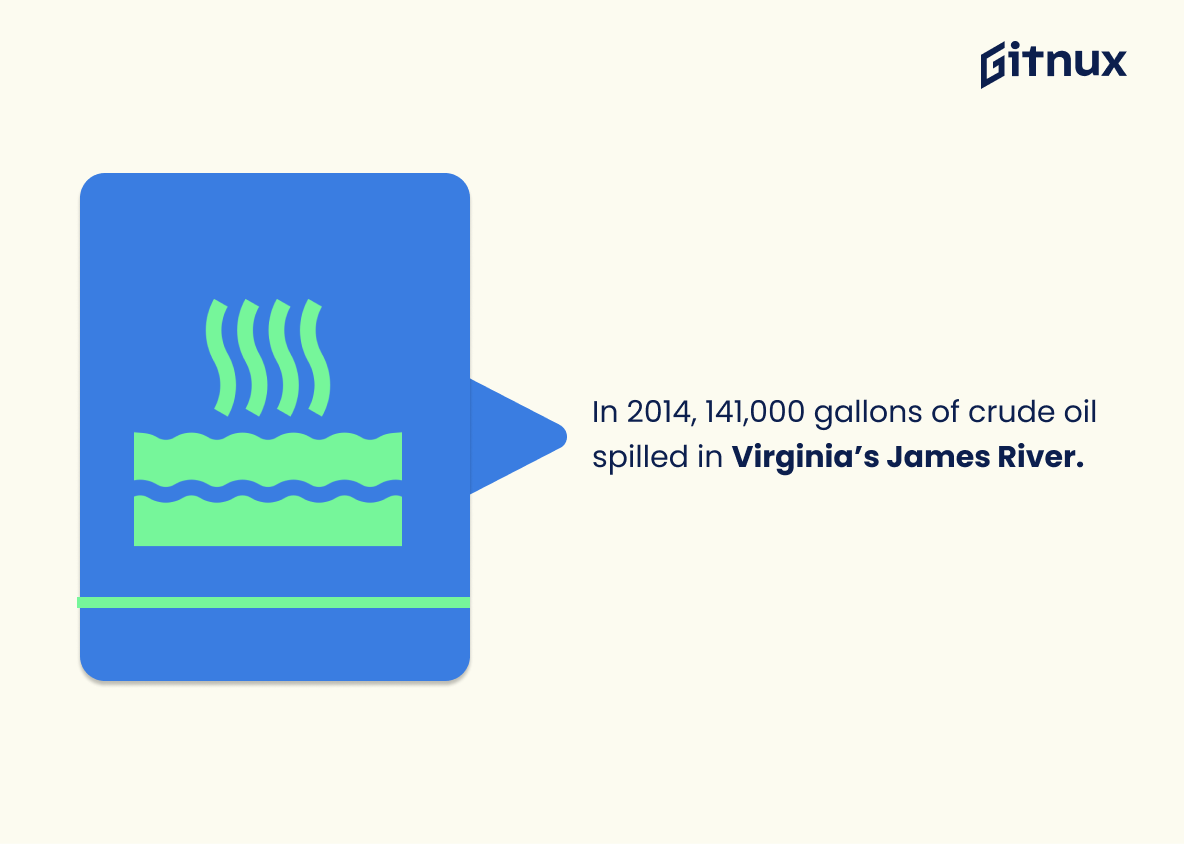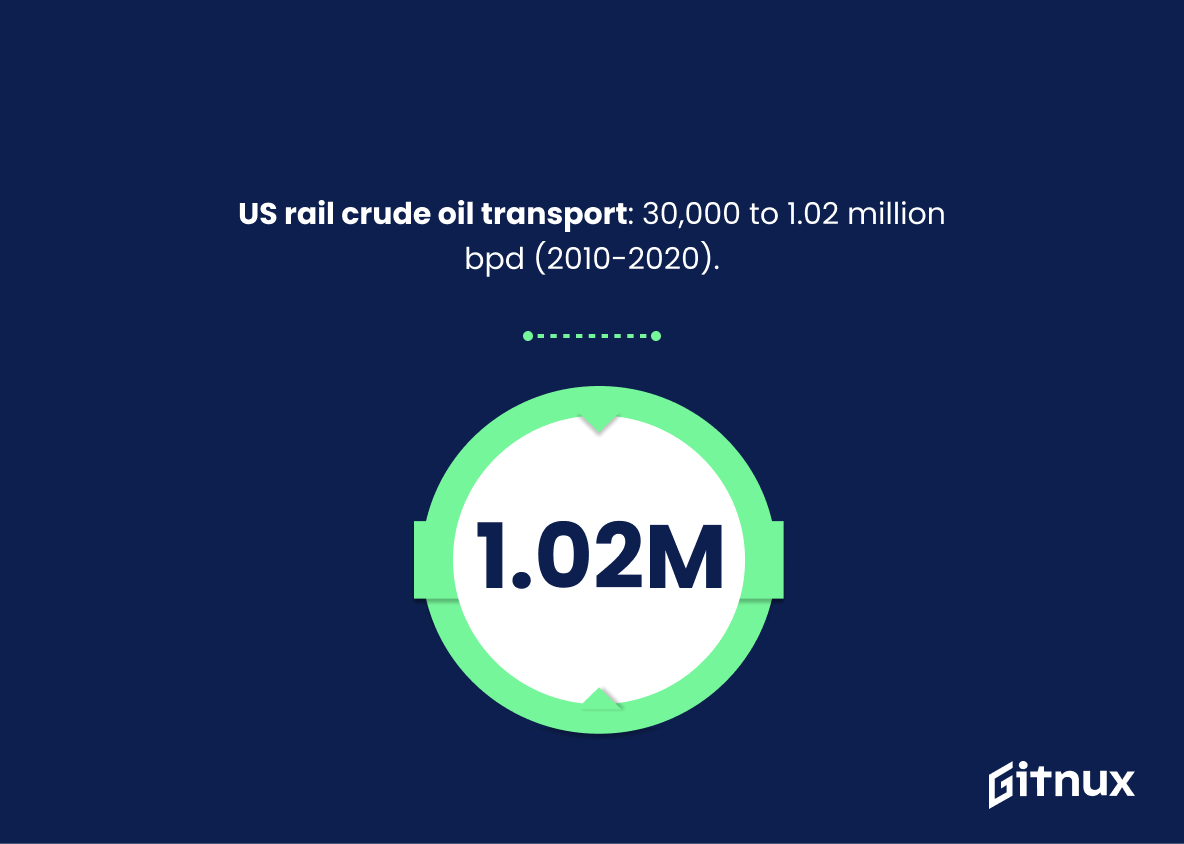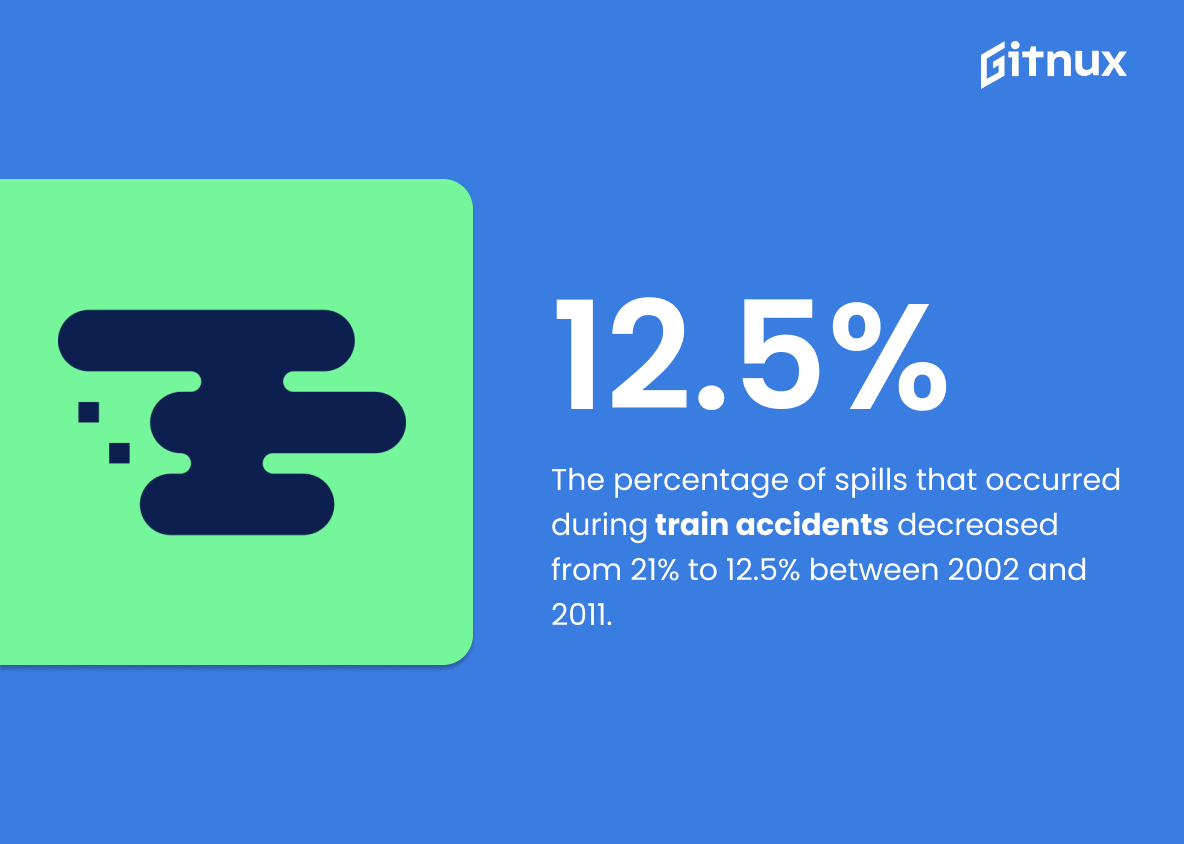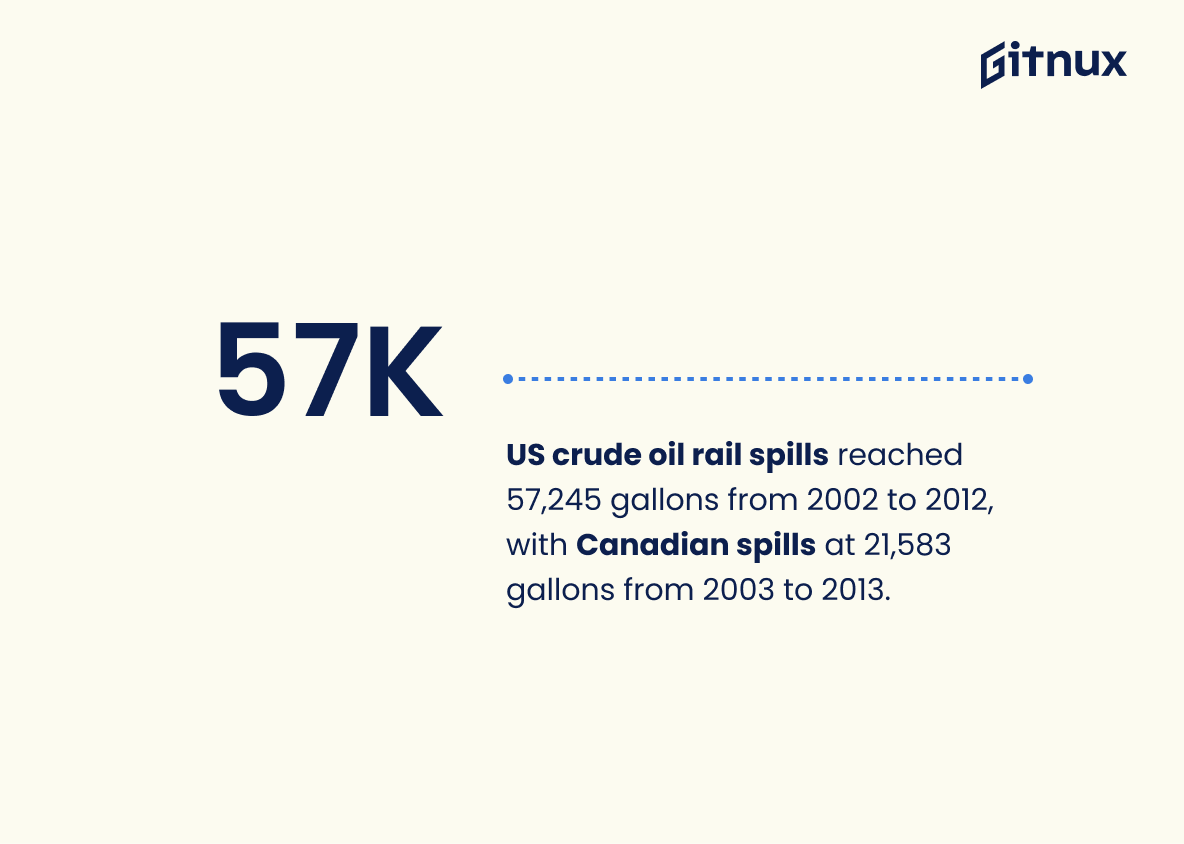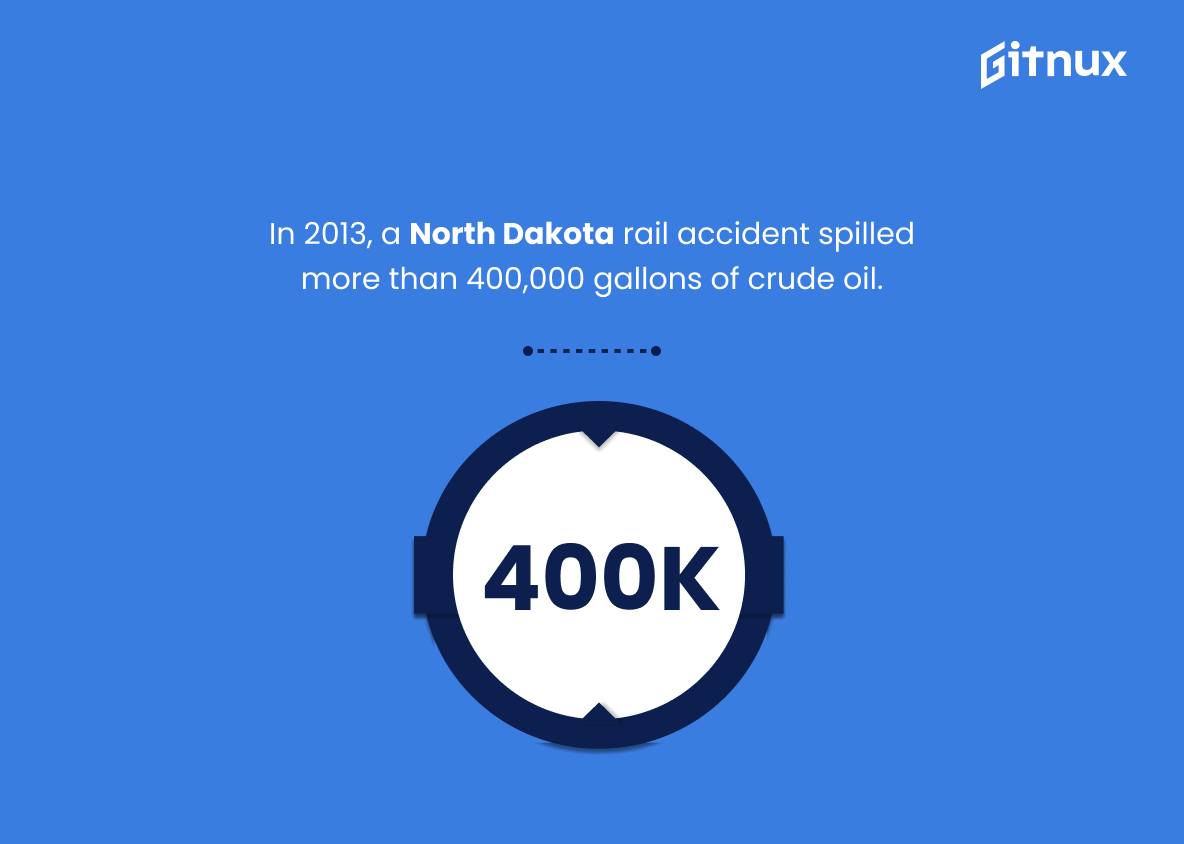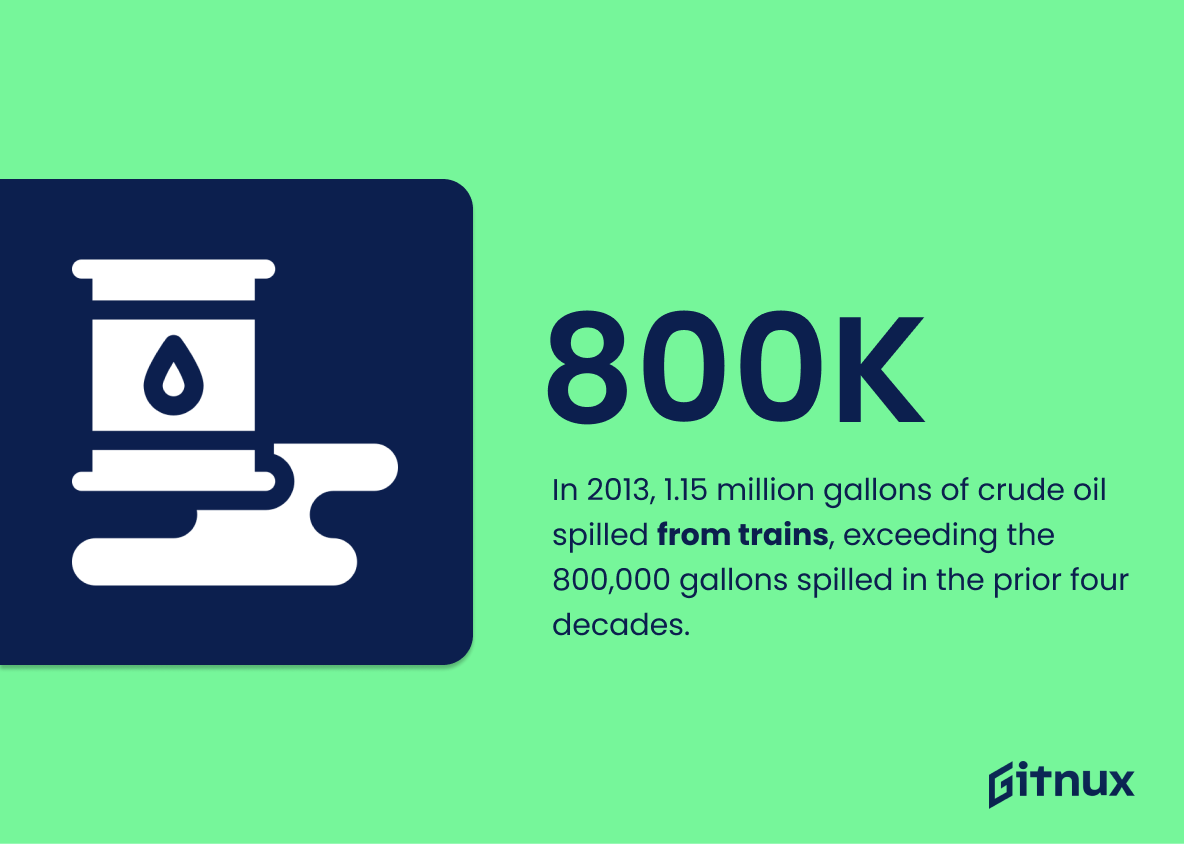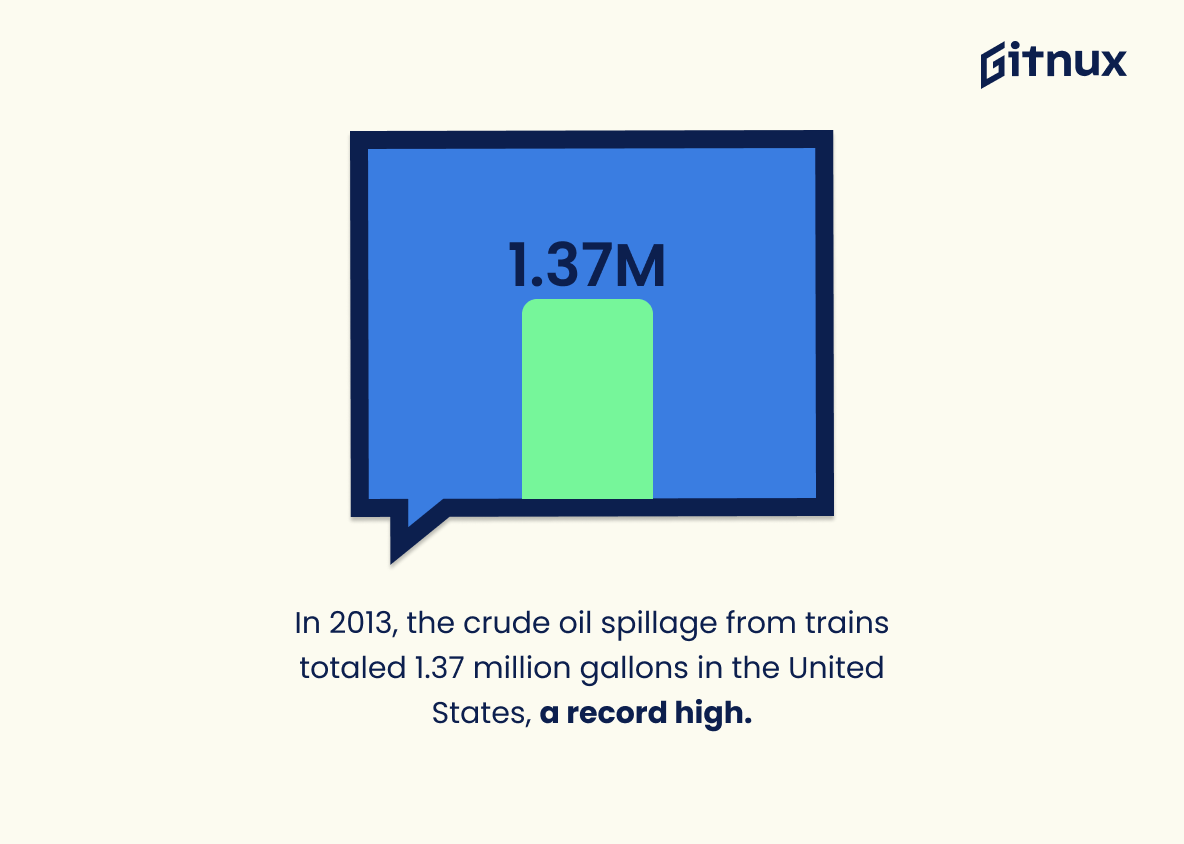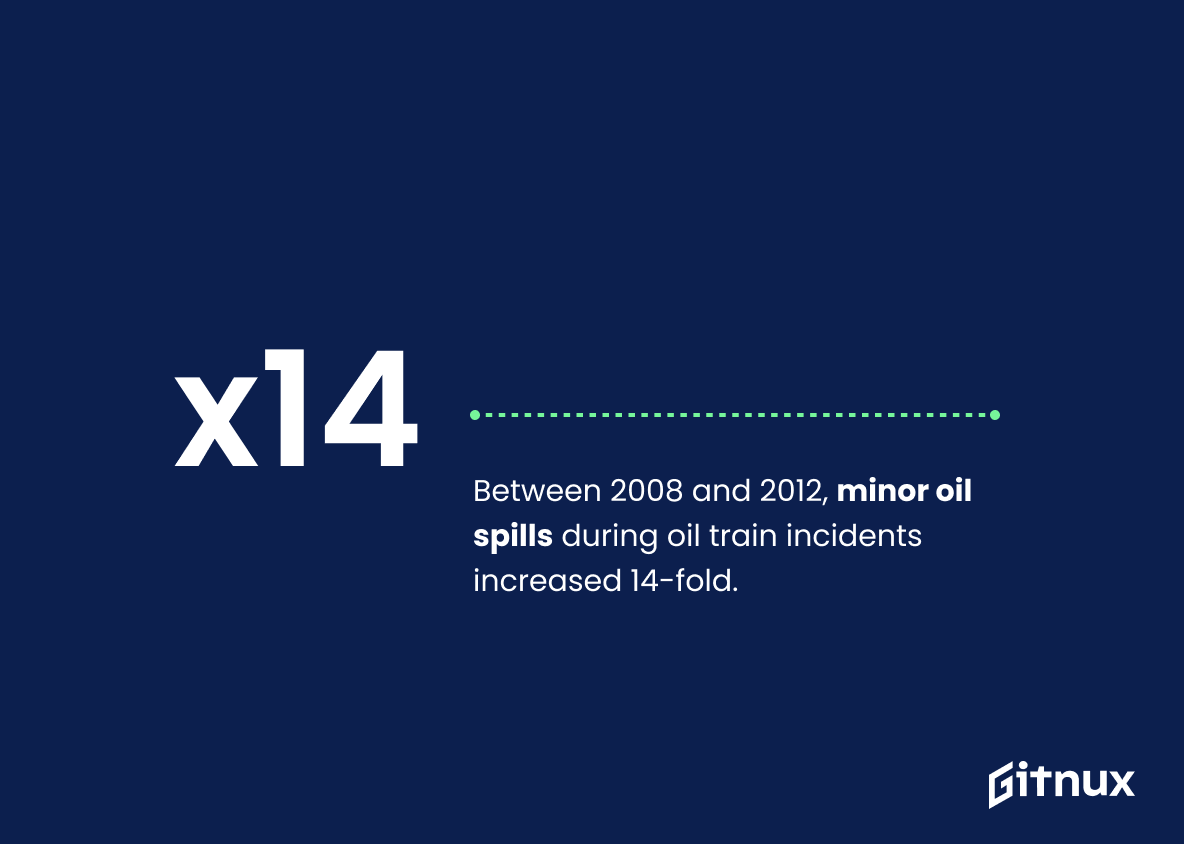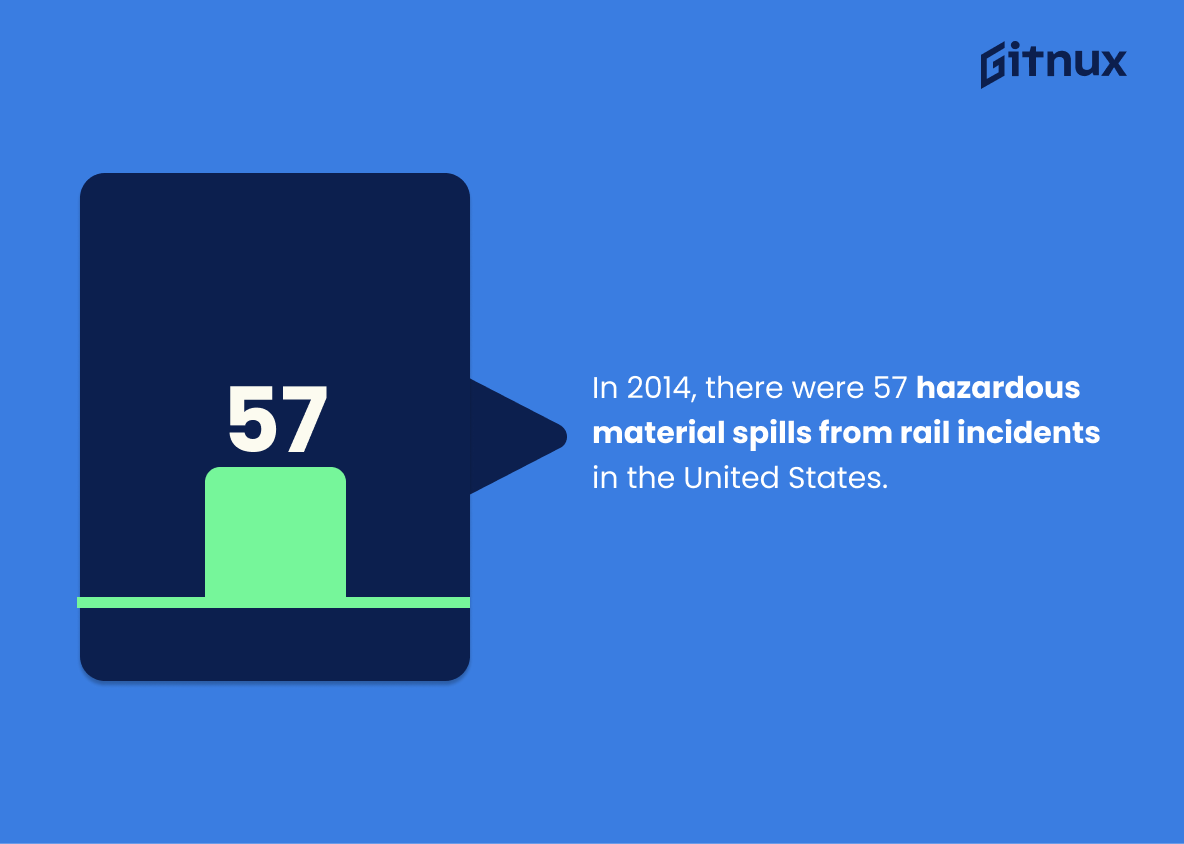The transportation of crude oil by rail has become increasingly popular in recent years, with the volume of crude oil transported increasing from 30,000 barrels per day in 2010 to 1.02 million barrels per day in 2020. Unfortunately, this increase has been accompanied by an alarming rise in the number and severity of train-related oil spills across North America. This blog post will explore some key statistics related to these incidents over the past two decades – including information on average spill volumes, causes for accidents and clean up costs associated with major disasters – as well as provide insight into how we can reduce future risks posed by transporting hazardous materials via rail networks.
Rail Oil Spill Statistics Overview
The 2013 Alabama rail oil spill involved 788,000 gallons of crude oil.
This statistic serves as a stark reminder of the devastating consequences of rail oil spills. It highlights the sheer magnitude of the 2013 Alabama rail oil spill, with 788,000 gallons of crude oil spilled, and serves as a warning of the potential environmental damage that can be caused by such accidents.
The Lac-Mégantic rail disaster in 2013 caused the spill of an estimated 1.58 million gallons of crude oil.
This statistic serves as a stark reminder of the devastating consequences of rail oil spills. The Lac-Mégantic rail disaster of 2013 is a tragic example of the potential destruction that can be caused by a single incident, with an estimated 1.58 million gallons of crude oil spilled. This statistic serves as a reminder of the importance of taking all necessary precautions to prevent such disasters from occurring.
Rail accidents involving oil spills increased from 3.3 per year in 2005–2009 to 24.5 per year in 2010–2014.
This statistic is a stark reminder of the growing danger of rail oil spills. It shows that the number of accidents involving oil spills has increased dramatically in the past decade, highlighting the need for greater safety measures to be taken to prevent such incidents from occurring.
In 2014, 141,000 gallons of crude oil spilled in Virginia’s James River.
This statistic serves as a stark reminder of the potential environmental damage that can be caused by oil spills. It highlights the importance of taking measures to prevent such spills from occurring in the first place, as well as having effective response plans in place to mitigate the damage when they do occur.
The volume of crude oil transported by rail in the United States increased from 30,000 barrels per day in 2010 to 1.02 million barrels per day in 2020.
This statistic is a powerful indicator of the dramatic shift in the transportation of crude oil by rail in the United States over the past decade. It speaks to the increasing reliance on rail as a means of transporting oil, and the potential risks associated with this method of transportation. This statistic is a key piece of evidence in understanding the potential for oil spills due to rail transportation, and the need for increased safety measures to protect the environment.
The percentage of spills that occurred during train accidents decreased from 21% to 12.5% between 2002 and 2011.
This statistic is a testament to the progress made in rail safety over the past decade. It shows that the efforts to reduce train accidents have been successful, resulting in a significant decrease in the number of oil spills caused by train accidents. This is an encouraging sign that the rail industry is taking steps to ensure the safety of its passengers and the environment.
In 2018, a total of 137 reported rail incidents involved the release of hazardous materials, including crude oil.
This statistic is a stark reminder of the potential danger posed by rail incidents involving hazardous materials, such as crude oil. It highlights the need for increased safety measures to prevent such incidents from occurring in the future.
Crude oil rail spills in the United States accounted for 57,245 gallons from 2002 to 2012, and Canadian spills accounted for 21,583 gallons from 2003 to 2013.
This statistic is a stark reminder of the potential environmental damage caused by crude oil rail spills in North America. It highlights the fact that, over the past decade, the United States has experienced more than double the amount of crude oil rail spills than Canada, with 57,245 gallons spilled in the US compared to 21,583 gallons spilled in Canada. This is a concerning statistic that should be taken seriously and addressed in order to prevent further environmental damage.
The oil spill cleanup cost for the Lac-Mégantic disaster was estimated at over $200 million.
The staggering cost of the Lac-Mégantic disaster serves as a stark reminder of the immense financial burden that oil spills can impose. This sobering statistic highlights the importance of taking preventative measures to reduce the risk of such disasters occurring in the future.
In 2013, a North Dakota rail accident spilled more than 400,000 gallons of crude oil.
This statistic serves as a stark reminder of the potential consequences of rail oil spills. It highlights the magnitude of the damage that can be caused by a single accident, with 400,000 gallons of crude oil spilled in a single incident. It is a powerful illustration of the need for increased safety measures and regulations to prevent such disasters from occurring in the future.
In 2013, 1.15 million gallons of crude oil were spilled from trains, compared to 800,000 gallons over the entire four decades prior.
This statistic is a stark reminder of the dangers of transporting crude oil by rail. It shows that in the span of just one year, the amount of crude oil spilled from trains was more than the amount spilled over the course of four decades combined. This alarming increase in oil spills from trains is a cause for concern and should be addressed immediately.
In 2013, the crude oil spillage from trains totaled 1.37 million gallons in the United States, a record high.
This record-breaking statistic serves as a stark reminder of the potential environmental damage caused by oil spillage from trains. It highlights the need for increased safety measures and regulations to prevent such a large-scale spillage from occurring again.
Between 2008 and 2012, minor oil spills during oil train incidents increased 14-fold.
This statistic is a stark reminder of the potential danger posed by oil trains. It highlights the alarming rate at which minor oil spills are occurring, and the need for increased safety measures to prevent further incidents. It serves as a warning that the current system is inadequate and needs to be improved to protect the environment and public safety.
In 2014, there were 57 hazardous material spills from rail incidents in the United States.
This statistic serves as a stark reminder of the potential danger posed by hazardous material spills from rail incidents in the United States. It highlights the need for increased safety measures and regulations to ensure that such spills are prevented in the future.
Conclusion
The statistics presented in this blog post demonstrate that rail oil spills are a serious issue. On average, there were 1,000 crude oil train spills per year from 2005 to 2015 and 73% of the largest oil spills since 1970 have been caused by incidents involving trains. In 2013 alone, over 2 million gallons of crude oil spilled due to two major accidents – one in Alabama and another at Lac-Mégantic – while 141,000 gallons spilled into Virginia’s James River in 2014. The volume of crude transported by rail has increased significantly since 2010 with an estimated 140,000 barrels per day being moved on Canadian networks as recently as 2021. Despite some improvements such as a decrease in the percentage of total spillage attributed to train accidents between 2002 and 2011 (from 21% to 12.5%), minor incidents continue to increase 14-fold during this same period; additionally, data shows that Bakken crude oils had higher rates for spillage than other types when compared on a billion barrel mile basis from 2010–2014 (1.52 vs 0.59). These figures highlight how important it is for governments around the world take action now before more damage is done through further catastrophic events or long term environmental degradation resulting from smaller but still significant releases like those seen across North America over recent years
References
0. – https://www.theglobeandmail.com
1. – https://www.journals.plos.org
2. – https://www.theguardian.com
3. – https://www.archive.epa.gov
4. – https://www.nytimes.com
5. – https://www.eia.gov
6. – https://www.businessinsider.com
7. – https://www.bts.gov
8. – https://www.ntsb.gov
9. – https://www.aljazeera.com
10. – https://www.ncbi.nlm.nih.gov
11. – https://www.grist.org
12. – https://www.ccacoalition.org
13. – https://www.oilprice.com
